- Home
- John Scalzi
The Android's Dream Page 7
The Android's Dream Read online
Page 7
“Of course not,” Archie said.
“That’s good to hear. I have a job for you.”
The job involved encrypted data that needed to be compared to data in an encrypted database. Archie’s job would be to oversee the data retrieval process, and if at all possible, speed it up; the encrypted database was massive and the project was under severe time constraints.
“It would make it easier if the data weren’t encrypted,” Archie said to Phipps.
“Try to make it easier with it still encrypted,” said Phipps, and glanced at his watch. “It’s nine p.m. now. I’ll be back tomorrow at nine a.m. to check on your progress, but if you come up with anything sooner you can send me a message.”
“My contract states that any work after midnight through six a.m. constitutes double overtime rates,” Archie said.
“Well, then, that’s good news for you,” Phipps said. “There’s a vending machine down the hall to your right. Bathroom is down the left. Have fun.” He left.
Archie set up the terminal in the basement office to begin searching through the database, and then went back upstairs to retrieve his personal work computer. He used his personal computer to optimize the search routine as much as possible given the encryption constraints, but after a couple of hours of fiddling he realized that even the fully optimized code was searching far too slowly for what he suspected was his new boss’s expectations.
Fuck it, he said to himself, copied the encrypted data onto his own computer, and hacked the encryption. This wasn’t difficult to do; whoever had encrypted the data used the encryption program that shipped with the computer’s OS. The encryption was supposed to be nearly unbreakable standard 16,384 bit, but thanks to the OS manufacturer’s perennially sloppy coding, the encryption generator that shipped with the OS featured distinct nonrandom artifacts which could be used to crack the encryption with embarrassing ease. The story finally broke when local TV in Minneapolis showed an eight-year-old hacking the encryption.
Coincidentally, at almost exactly the same time the story was airing in Minneapolis, the Seattle, Washington, metropolitan area experienced an earthquake registering 5.3 on the Richter scale. Tech wits attributed it to Bill Gates spinning in his grave. The OS manufacturer eventually put out a patch, but government IT managers were not well known for keeping up with the latest patches.
The data turned out to be DNA of some sort, which was excellent news for Archie. DNA lends itself extremely well to search optimization, since one can simply “sample” the DNA code, and look for variations based only on that portion of the code rather than the entire genome. Any DNA in the encrypted database showing variance could be thrown out, leaving a smaller set for examination with a slightly more rigorous sampling. Repeat a few times with progressively smaller numbers of DNA molecules on your database, and suddenly you’ve got your matches.
Now all Archie had to do was identify the species. He downloaded a shareware sequencer that promised a reference database of over 30,000 animal and plant species (upgradable to over 300,000—just $19.95!) and a special database containing the sequencing for 1500 breeds of livestock, domesticated animals, and common household plants, sent the genome in for processing, and ambled down to the vending machine for a Dr Pepper.
Which he promptly dropped when he saw the origin of the DNA waiting for him when he got back. This was followed by several seconds of unblinking, mouth-breathing agape-ness, followed by a rapid lunge for his computer. Archie uninstalled the sequencer, deleted the cracked encryption file, chewed on his thumb for a good thirty seconds, and then went to his computer’s shell prompt and reformatted his entire computer memory. Just to be sure.
Then he went down the hall to the bathroom, huddled into a stall, and made a brief, hushed but emphatic call on his communicator. When that was done, he sat on the toilet for several minutes with a look on his face that implied he was having a deeply emotional, spiritual moment, or that he was painfully gassy.
He was not gassy.
chapter 4
“Hello! And welcome to your new computer!” the image said to Creek as soon as he switched on the new computer. The image was of a young man in breeches, a plain long coat, and a Quaker hat. “I am your personal intelligent agent, sponsored by America Online. Call me Todd. Activate me and receive forty-five days FREE access to America Online, Earth’s oldest and largest continually active network.”
Creek smirked at the hopeful agent imprinted onto his monitor glasses. “Hello, Todd,” he said to the intelligent agent. “Show me your source code, please.”
“My source code is the intellectual property of America Online and its parent company, Quaker Oats Holdings,” Todd said. “I’m afraid I’m not allowed to divulge it to my individual user. But when you activate your America Online account with forty-five days FREE access, I’ll be happy to retrieve information on open source intelligent agents, although I can guarantee they’re not as good as I am, when combined with America Online’s unbeatable suite of content and services!”
“Oh, I believe you, Todd. Unfortunately, I don’t have time for that,” Creek said, and from the storage cube he’d set alongside his new rig, activated the stripper program that froze the intelligent agent and disabled the alert message that would speed its way back to AOL’s servers. “Bye, Todd,” Creek said.
“I will be avenged!” Todd said, before it froze up completely. This got another smirk from Creek; Todd’s programmers, knowing that it would inevitably be hacked, thought enough to leave a parting message to the hacker; a kind of salute, as it were. A window popped up in the monitor glasses, spilling Todd’s source code at a high rate.
Creek scanned it cursorily. The late, unlamented Todd was correct: It was a pretty good intelligent agent, as far as commercial agents went. But like most commercial agents, it wasn’t terribly bright and it was programmed to research from certain commercial databases, mostly owned by Quaker Oats. How Quaker Oats became the largest mainstream information and technology service in the world was one of those stories that could fill the dry nonfiction books of at least three sabbatical-taking Wall Street Journal writers. All Creek knew is that he enjoyed seeing a guy in breeches become the universal symbol of high technology. Still, he didn’t want his own intelligent agent wearing 18th-century clothing. Creek had as well-developed a sense of irony as the next guy, but breeches were simply distracting.
From the storage cube, Creek pulled out the source code for an intelligent agent he’d been developing at the time of his last vacation from the computing world, and began mixing and matching it with Todd. Todd’s database connection and information retrieval and optimization subroutines stayed; its native AI and database preferences were tossed, as were its request caching; if the UNE government wasn’t supposed to know what he was looking for, there no reason why AOL or Quaker Oats should. His Frankenstein monster of an agent now collected, Creek fired up a zipper utility to mesh the parts together. His new agent had everything it needed except for one element. But to incorporate that element, he needed a little more headroom than his new computer was going to give him.
Creek flipped out his communicator and made a call.
“NOAA,” the voice on the other end said. It was Bill Davison, an old friend of Creek’s.
“Yeah, I want to know if it’s going to rain tomorrow,” Creek said.
“You know, the sad thing is how many calls we get which actually ask that,” Bill said. “Like it’s easer to call us than to watch the news.”
“Everyone knows you can’t trust weathermen,” Creek said.
“Christ, I don’t trust them, and I am one,” Bill said. “How are you, Harry?”
“Same old, same old, Bill,” Creek said. “Listen, I was wondering if I could trouble for you a favor.”
“I’m broke,” said Bill. “I work for the government, you know.”
“Funny,” Creek said. “You have the same pay scale I have. That’s not too bad.”
“Said the guy who isn’
t paying alimony and child support,” Bill said. “But enough about my pathetic life. What do you need, Harry?”
“I understand that you folks over there at the National Oceanic and Atmospheric Administration have some nifty computers,” Creek said.
“We sure do,” Bill allowed. “We model the weather so you don’t have to. Speaking in the aggregate, we have more computing power than every single human brain in Massachusetts, although since that’s where my ex is from, you’ll have to take that estimation with a grain of salt.”
“Are you using all of it at the moment? I kind of have a project I need a little extra computing power for.”
“How much you need?” Bill asked.
“How much you got?” Creek asked.
“Oh,” Bill said. “One of those projects. You know, the last time I let you borrow time, I sort of got a talking-to. My boss at the time was going to write me up, until I mentioned to him that while your work was not technically germane to weather tracking and prediction, neither was his lesbian pornography simulator. We agreed to let it drop after that.”
“Well, I don’t want to get you in trouble,” Creek said.
“Don’t worry about it,” Bill said. “He left anyway. He’s now VP of technology for Smith College. Remind me in about twelve years to make sure my daughter doesn’t go there.”
“It’s a deal,” Creek said.
“Nifty,” Bill said. “Now let’s see. Hurricane season has begun, which means we’ve got a pretty heavy load at the moment, so I can’t carve off any time for you on any of the big guns. But here’s something that might do. We’ve got an IBM box that’s sitting idle; it’s scheduled to be replaced. It’s a couple of generations back, so it’s not top of the line, but on the other hand it’ll be all yours. And this way no one will complain when your little project suddenly grabs all the processing cycles. Hell, no one will even know it’s there, and that’s good for me.”
“That sounds perfect, Bill,” Creek said, “I owe you one.”
“No you don’t,” Bill said. “I’d be dead if it wasn’t for you. Short of asking for cash or sex, there’s not much you could ask for I’d say no to.”
“That was a long time ago now,” Creek said. “I think we’re getting close to karmic balance.”
“Says you,” Bill said. “We all should have bought it at Pajmhi. Every day I’m alive is a day extra. Although I should note that in this calculation, since my life was extended long enough to get married, you’re indirectly responsible for my divorce.”
“Sorry about that,” Creek said.
“Forget it,” Bill said. “It could be worse. I got a great kid out of it.”
“Who should not go to Smith,” Creek said.
“Thanks for the reminder. Here’s the address for the IBM.” Bill rattled it off. “Give me a minute to set up a user account for you under ‘creek.’ Password the same. Change both once you get in and lock the door behind you, if you know what I mean. The IBM is still connected to the network and the last thing I need is for some teenager to get in and start fucking with our weather reports. Something like that is not easily remedied by blackmailing the boss.”
“Got it,” Creek said. “Thanks again, Bill.”
“De nada,” Bill said. “Gotta go. These hurricanes don’t model themselves.” He clicked off.
Creek stared at his communicator for a moment, and for about the one millionth time in his life pondered over the Battle of Pajmhi, who lived, who died, and how it all played out over the rest of his life. At this specific moment, it worked to his favor. This brought the tally to one good thing for every thousand bad things. Be that as it may, it was one good thing he could use.
Creek signed into the IBM machine and fired up a system diagnostic; he was delighted to find it sufficiently roomy in both memory and processing for what he needed. Creek went to his closet and pulled out another memory cube, activated it, and sent its exceptionally compressed contents to the IBM. This took the better part of 20 minutes; Creek fixed himself a snack. When the cube’s contents had transferred, Creek sent over a program to decompress and then assemble the data. The data were actually several separate files; the core was a data file that, once assembled, would be comparatively small. Most of the massive amounts of data were files that would comprise the modeling environment for the core data.
It was this modeling environment that Creek had spent the better part of two years creating, mostly from bits and pieces of unrelated commercial code jammed together with zipper programs and a substantial amount of hand coding by Creek to modify the existing programs to do what he wanted them to do. The resulting modeling environment was a massive “fuck you” to the general concept of the End User License Agreement, which specifically denied users the right to crack open the programs and play with the code. But if these corporations could see what Creek had done with their hacked software, it was doubtful they’d try to put him in the slammer; they’d just try to hire him. For ridiculous amounts of cash.
The government might try to put him in the slammer. Fortunately, he worked for the government. And he had friends in high places.
Anyway, the point was moot. Creek wasn’t going to market his software. He was just going to use it himself.
Creek queried the IBM to see how long it would be before his programs would be unpacked, assembled, and modeling the central data file. He was told it would be about a day. That seemed about right to him.
His new computer pinged Creek. His intelligent agent was all zipped up. Creek activated it.
“Hello,” the agent said. Everything about it, from clothes to skin tone to voice, was curiously neutral. “Do you have a name you wish to use for me?”
“Not yet,” Creek said. “You’re not finished.”
“I’m fully functional,” the agent said.
“Yes you are,” Creek said. “You’re just not finished. Until then I’ll refer to you as ‘agent.’”
“Very well,” the agent said. “May I assist you?”
“Yeah,” said Creek. “We’re going hunting for fabricators. Let’s see what my new security clearance does for me.”
Fabricators are regulated. They’re regulated for the very simple reason that one can make just about anything on them, including parts for weapons. Gun parts, in fact, are one of the prime purposes of metal fabricators; pop in a pattern for any gun part in any gun built from 1600 onward and in the space of a few minutes you’ll be presented with a solid metal item of such standardized high quality that it would make Eli Whitney, the first mass producer of weapons, choke with envy. It also means that an entire weapon could be constructed and assembled off the books, which makes various law enforcement bureaus unhappy. Therefore, every fabricator is licensed and registered, and a log made of every part created by that particular fabricator, which must be filed with the UNE Trade Commission daily.
No legal fabricator in Virginia, Maryland, or Washington DC had a log of an Anally Inserted Nidu Enrager being manufactured in the last year or so.
This was of course entirely unsurprising. Creek had his agent run the search knowing full well it wouldn’t find anything. You have to eliminate the low-hanging targets first, on the off chance you were dealing with morons. The next level up on the moron scale were the logs that were doctored to remove particular entries; Creek’s agent caught several of those but subsequent crawls into the fabricator’s memory drives (typically not reformatted, so the expunged log entries were not yet overwritten) revealed only the expected gun parts, except for the one that showed a wedding ring. There was undoubtedly a sad and compelling story there.
So. From here on out Creek felt justified in working on the assumption that he was not dealing with idiots. Creek had his agent go through the Washington DC metro area police records for the last decade to find out whether a fabricator had gone missing. No dice; Virginia likewise came up clean, as did Maryland. Creek tapped his teeth for a minute in thought and then asked the agent to start churning through insuranc
e claims in the last decade to see if anyone had filed for a missing or destroyed fabricator.
There were two. Three years ago in Occoquan, an antiques arcade had burned down to the ground due to an ironically antique sprinkler system. Inside the arcade, along with a couple dozen other small antiques boutiques, was a gunsmith selling Revolutionary-era weapons and recreations. This file included a picture of the ruined fabricator sitting charred in what remained of the gunsmith’s boutique. Creek felt pretty safe crossing that one off his list.
The second one, from six years earlier, was more interesting. In that claim, a fabricator in the process of being shipped from the manufacturer was among the inventory in a Baltimore warehouse whose roof had partially collapsed. There was no picture of the destroyed fabricator in that file and the claim had been disputed by the insurance company before being paid. Creek pulled the police report for the roof collapse; the forensics report suggested strongly that the roof collapse was not accidental. Aside from the fabricator, the allegedly destroyed inventory of the warehouse also included several machines and machine parts intended for a genetics lab in Rockville, but which Creek knew from his police years could be repurposed for refining designer drugs.
A title search for the warehouse came up with a holding company, one of whose primary shareholders was Graebull Industries, the ostensibly legit arm of the Malloy crime family, whose empire encompassed Baltimore and DC. The “security guard” at the warehouse that night had a sheet filled with petty thefts; a couple years down the time stream he’d be caught with a truck full of entertainment monitors and would turn on the Malloys in return for federal protection. A year after testifying, parts of him showed up in the concrete of a Class A minor league baseball stadium being built in Aberdeen. Other parts were still unaccounted for.
“This is good,” Creek said.
“If you say so, sir,” his agent said. The agent was good at finding information as directed, but not much for a sense of ironic humor.

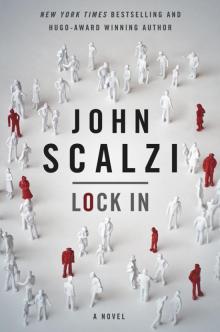 Lock In
Lock In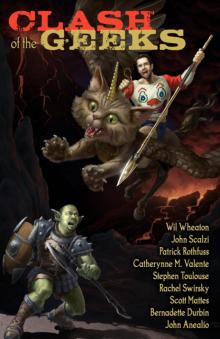 Clash of the Geeks
Clash of the Geeks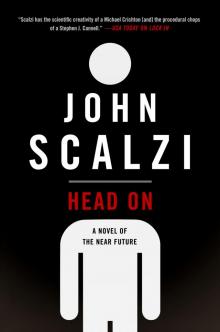 Head On
Head On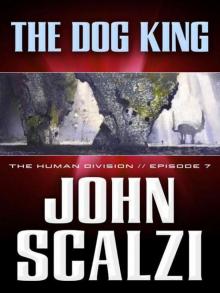 The Dog King
The Dog King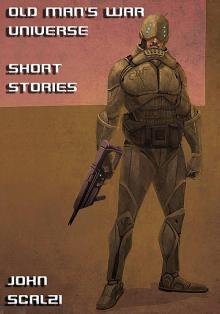 Old Man's War Universe: Short Stories
Old Man's War Universe: Short Stories The End of All Things
The End of All Things Tales From the Clarke
Tales From the Clarke The Human Division
The Human Division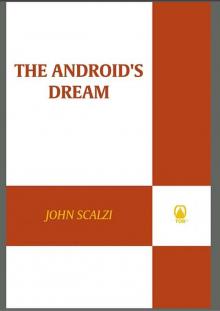 The Android's Dream
The Android's Dream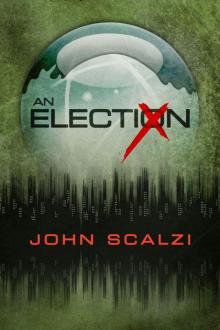 An Election
An Election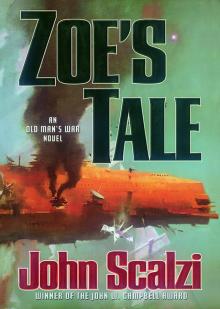 Zoe's Tale
Zoe's Tale Agent to the Stars
Agent to the Stars This Hollow Union
This Hollow Union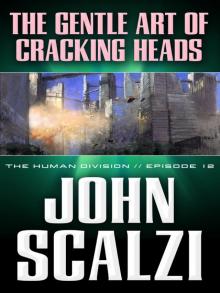 The Gentle Art of Cracking Heads
The Gentle Art of Cracking Heads Old Man's War
Old Man's War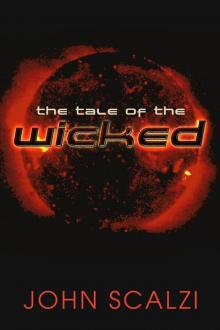 The Tale of the Wicked
The Tale of the Wicked Your Hate Mail Will Be Graded: A Decade of Whatever, 1998-2008
Your Hate Mail Will Be Graded: A Decade of Whatever, 1998-2008 Judge Sn Goes Golfing
Judge Sn Goes Golfing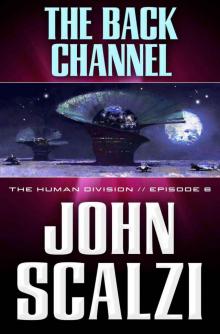 The Back Channel
The Back Channel The Human Division 0.5 - After the Coup
The Human Division 0.5 - After the Coup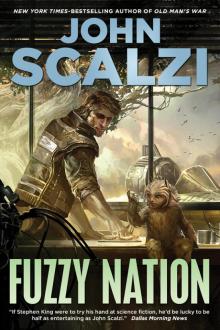 Fuzzy Nation
Fuzzy Nation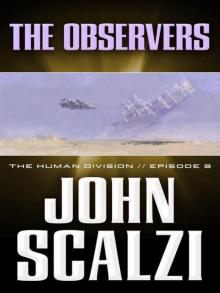 The Observers
The Observers This Must Be the Place
This Must Be the Place The Last Colony
The Last Colony Unlocked: An Oral History of Haden's Syndrome
Unlocked: An Oral History of Haden's Syndrome A Voice in the Wilderness
A Voice in the Wilderness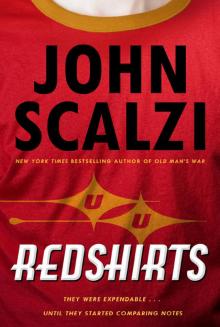 Redshirts
Redshirts The Collapsing Empire
The Collapsing Empire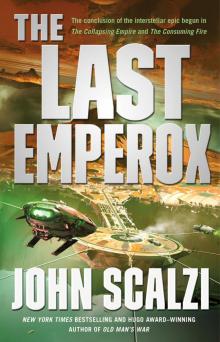 The Last Emperox
The Last Emperox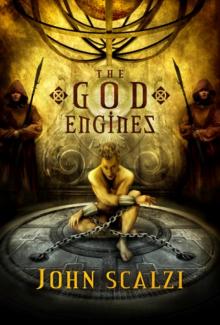 The God Engines
The God Engines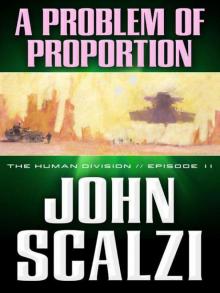 A Problem of Proportion
A Problem of Proportion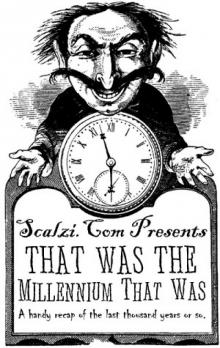 THAT WAS THE MILLENIUM THAT WAS
THAT WAS THE MILLENIUM THAT WAS The B-Team
The B-Team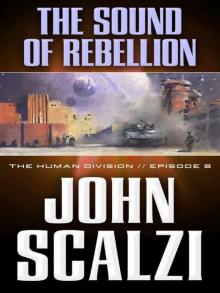 The Sound of Rebellion
The Sound of Rebellion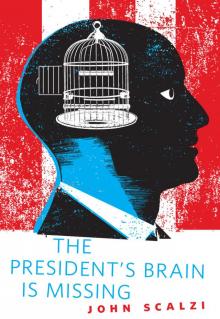 The President's Brain Is Missing
The President's Brain Is Missing Questions for a Soldier
Questions for a Soldier Walk the Plank
Walk the Plank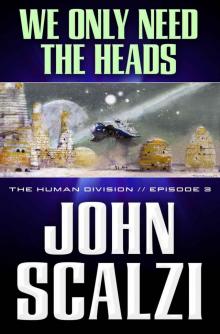 We Only Need the Heads
We Only Need the Heads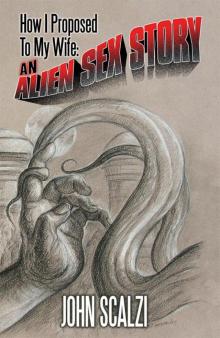 How I Proposed to My Wife: An Alien Sex Story
How I Proposed to My Wife: An Alien Sex Story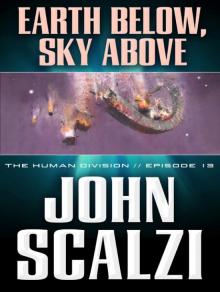 Earth Below, Sky Above
Earth Below, Sky Above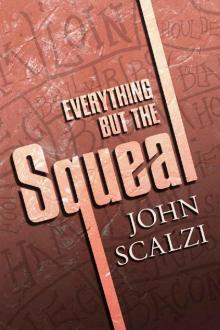 Everything but the Squeal
Everything but the Squeal Old Man’s War
Old Man’s War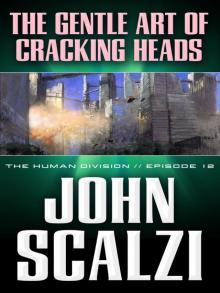 The Human Division #12: The Gentle Art of Cracking Heads
The Human Division #12: The Gentle Art of Cracking Heads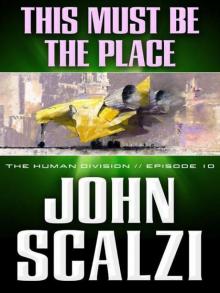 This Must Be the Place thd-10
This Must Be the Place thd-10 A Voice in the Wilderness thd-4
A Voice in the Wilderness thd-4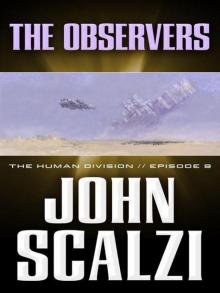 The Observers thd-9
The Observers thd-9 The End of All Things: The Fourth Instalment
The End of All Things: The Fourth Instalment Earth Below, Sky Above thd-13
Earth Below, Sky Above thd-13 Zoe`s Tale вбиос-4
Zoe`s Tale вбиос-4 After the Coup
After the Coup Miniatures: The Very Short Fiction of John Scalzi
Miniatures: The Very Short Fiction of John Scalzi The Last Colony вбиос-3
The Last Colony вбиос-3 Tales From the Clarke thd-5
Tales From the Clarke thd-5 Old Man's War omw-1
Old Man's War omw-1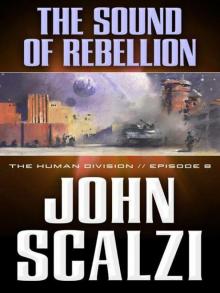 The Human Division #8: The Sound of Rebellion
The Human Division #8: The Sound of Rebellion The Ghost Brigades omw-2
The Ghost Brigades omw-2 The Sagan Diary (old man's war)
The Sagan Diary (old man's war)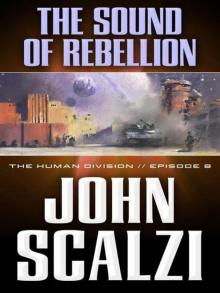 The Sound of Rebellion thd-8
The Sound of Rebellion thd-8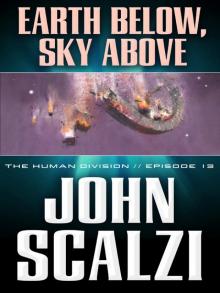 The Human Division 13 - Earth Below, Sky Above
The Human Division 13 - Earth Below, Sky Above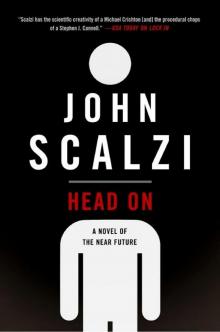 Head On_A Novel of the Near Future
Head On_A Novel of the Near Future The End of All Things: The First Instalment
The End of All Things: The First Instalment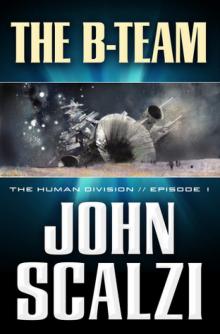 The B-Team thd-1
The B-Team thd-1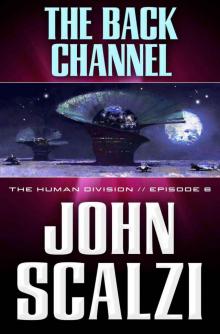 The Back Channel thd-6
The Back Channel thd-6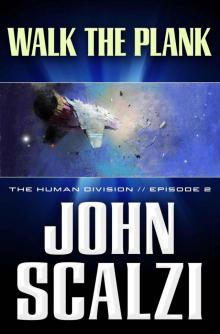 Walk the Plank thd-2
Walk the Plank thd-2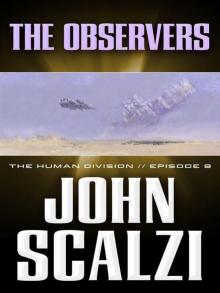 The Human Division #9: The Observers
The Human Division #9: The Observers The End of All Things: The Third Instalment
The End of All Things: The Third Instalment The Human Division #10: This Must Be the Place
The Human Division #10: This Must Be the Place The End of All Things #2: This Hollow Union
The End of All Things #2: This Hollow Union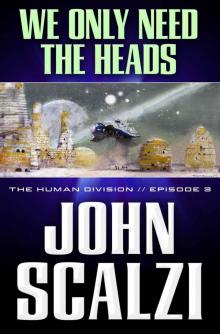 We Only Need the Heads thd-3
We Only Need the Heads thd-3 Metatropolis
Metatropolis The Dog King thd-7
The Dog King thd-7 The Consuming Fire (The Interdependency)
The Consuming Fire (The Interdependency)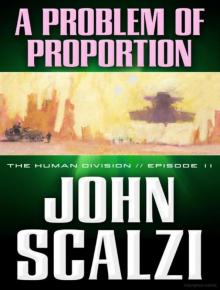 The Human Division #11: A Problem of Proportion
The Human Division #11: A Problem of Proportion